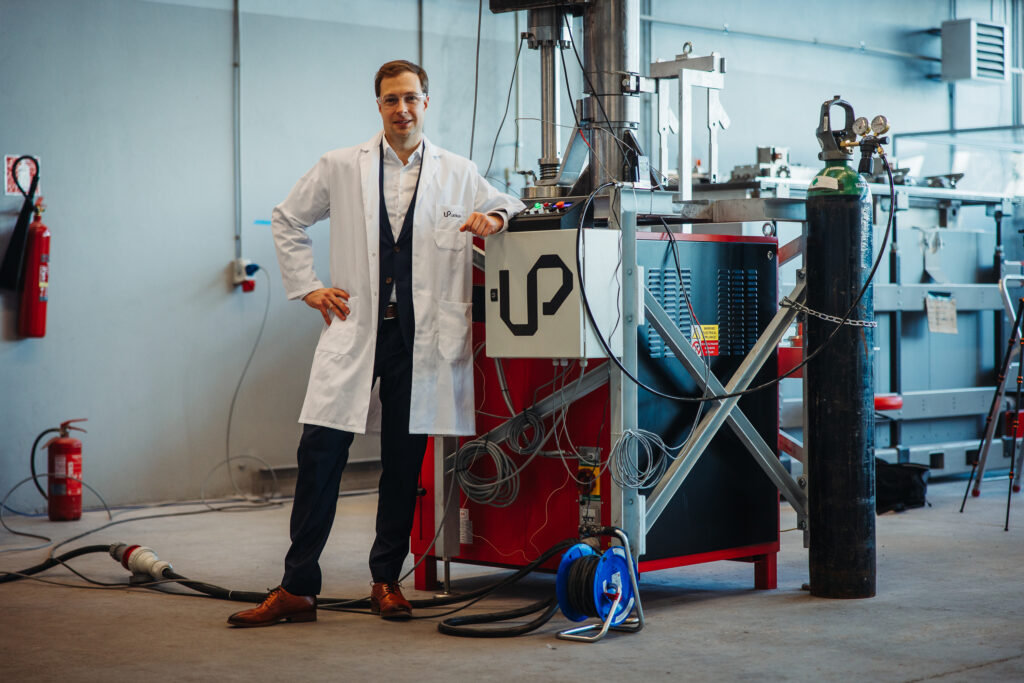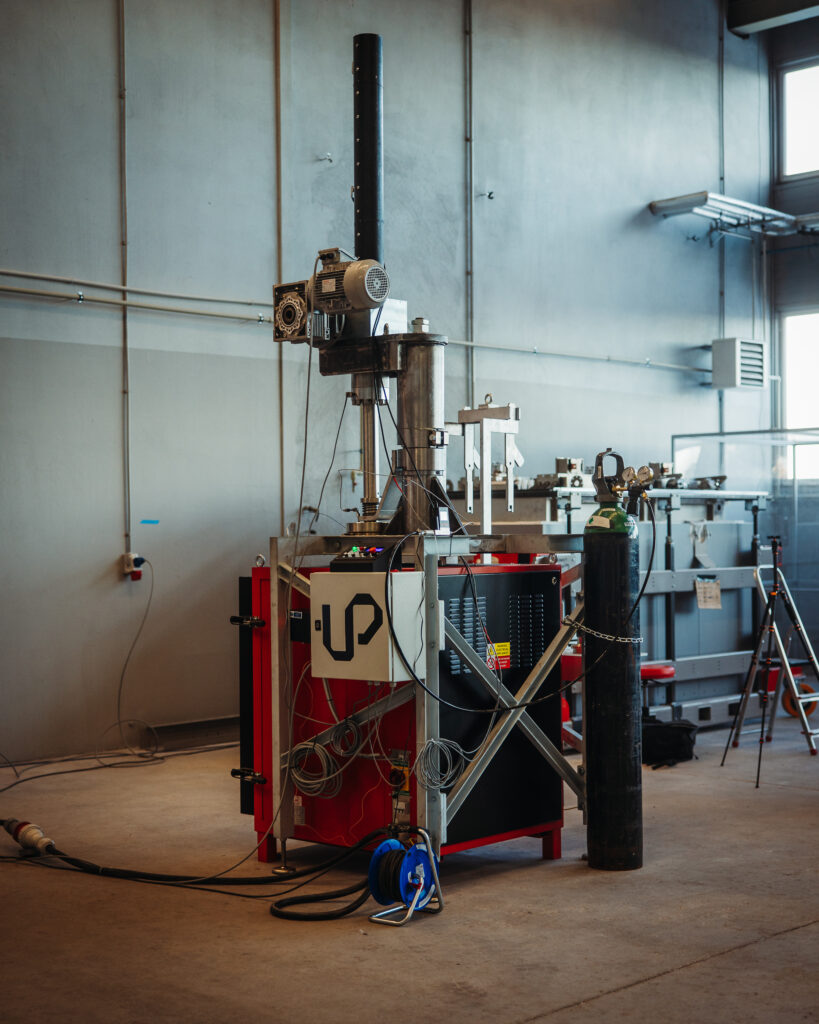
At UP Catalyst, we not only transform CO₂ emissions into solid carbon materials but also prioritise 𝗺𝗮𝘁𝗲𝗿𝗶𝗮𝗹 𝗿𝗲𝘂𝘀𝗲 𝗶𝗻 𝗼𝘂𝗿 𝗖𝗢𝟮 𝘁𝗿𝗮𝗻𝘀𝗳𝗼𝗿𝗺𝗮𝘁𝗶𝗼𝗻 𝗽𝗿𝗼𝗰𝗲𝘀𝘀!
About the Project
The project idea came from a practical need to maximise resource efficiency. UP Catalyst transforms CO₂ emissions into solid carbon materials. CO₂ is electrochemically transformed and the oxygen is evolved. The electrolyte sticks to the carbon, and to regenerate and reuse it, a special device had to be developed.
As part of the MoReCCU project, funded by 𝗘𝗜𝗧 𝗠𝗮𝗻𝘂𝗳𝗮𝗰𝘁𝘂𝗿𝗶𝗻𝗴, UP Catalyst together with project partners have designed, built, and integrated an advanced molten salt regeneration system into our carbon nanomaterials and graphite synthesis process.
Electrolyte Regeneration Device
UP Catalyst came up with an idea to develop an innovative press that can separate electrolyte that is sticking to the carbon and to reuse it in Molten Salt Carbon Capture and Electrochemical Transformation (MSCC-ET) technology.
The device operates by keeping the electrolyte molten in the furnace while applying a combination of gas pressure and mechanical pressure from a screw jack. This process enables the filtration of the electrolyte to the bottom of the collection vessel, leaving the carbon remaining on the filter phase.
The innovation lies in the use of high gas pressure, which effectively separates the carbon from the electrolyte. This allows the electrolyte to be reused in the synthesis process, maximising process efficiency.
This automated system efficiently removes solid products and impurities from the electrolyte mixture, leading to higher-quality carbon while significantly enhancing resource efficiency.

Key Achievements
🔹 Up to 95% resource reduction.
🔹 Higher carbon material quality.
🔹 Improved energy efficiency.
🔹 Reduced production costs.
Next Steps
The next step is to scale up the technology for large-scale production, enabling efficient recovery and direct reuse of the electrolyte in the synthesis process. This is a crucial step to make Molten Salt Carbon Capture and Electrochemical Transformation the most energy and resource efficient technology that enables lowest cost carbon products.
Project Consortium
- UP Catalyst led the project.
- Universitat de Lleida provided academic expertise on molten salts throughout the project.
- Slovenská technická univerzita v Bratislave (STUBA) designed the regeneration device.
- INEGI Driving Science & Innovation constructed the Molten Salt Regeneration System.

